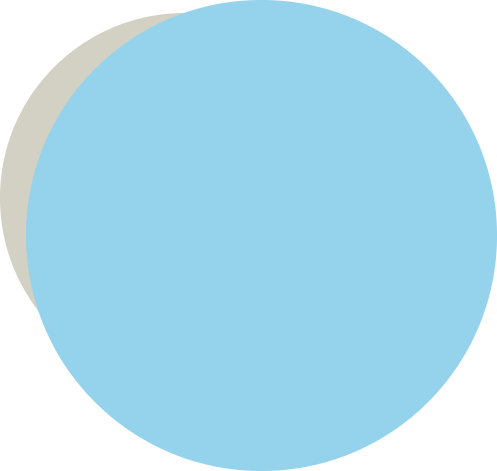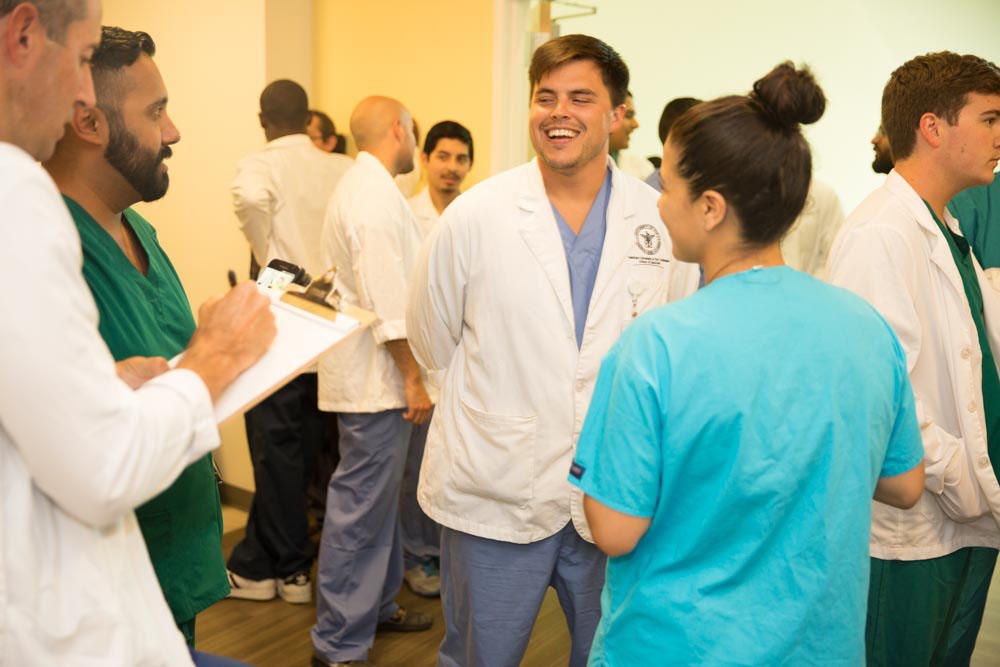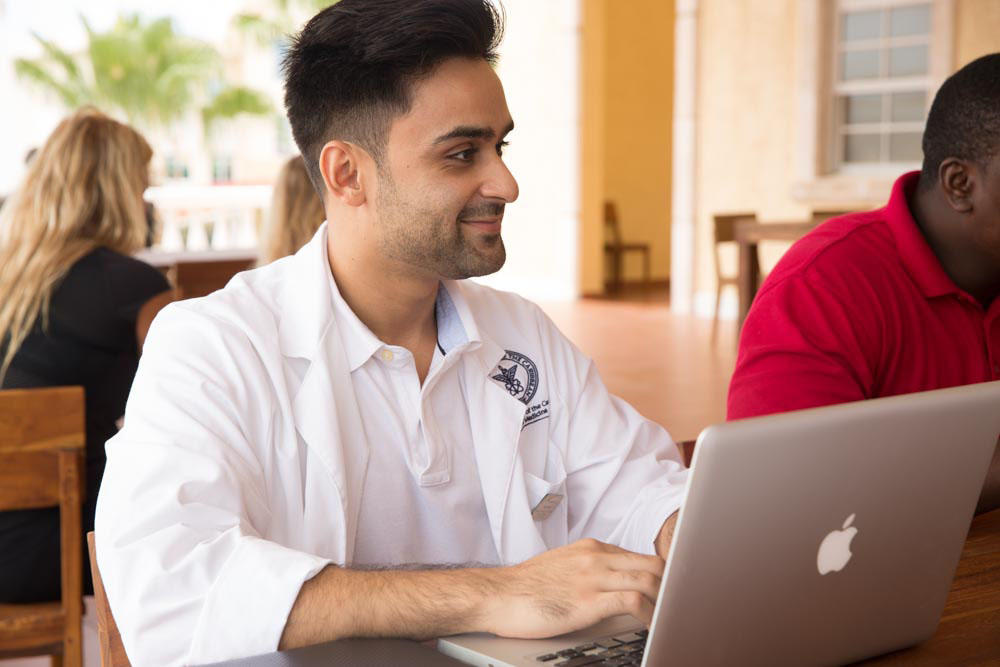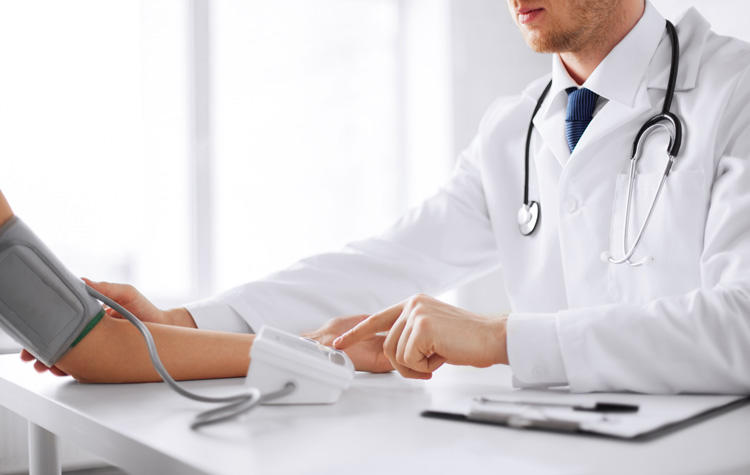While students are in the final year of a four-year medical school—such as the American University of the Caribbean School of Medicine (AUC School of Medicine)—they begin applying to medical residencies. Exactly what is residency? Residency medicine is post-graduate training for freshly minted physicians with a Doctor of Medicine (MD) or a Doctor of Osteopathy (DO) degree. Fourth-year medical students usually know which medical specialty they want to explore, and they may apply to several medical residency programs that feature that specialty. After positive responses and successful residency interviews, students create a “rank-order list” of preferred residency programs which is matched against a similar list created by the programs. In late March of their final semester—on “Match Day”—students learn if they have been matched with a residency program to fill post-graduate training positions accredited by the Accreditation Council for Graduate Medical Education (ACGME). Most medical students match with one of their top three preferred residency programs. Students applying to more competitive specialties may be matched with programs lower down their list.
Having fulfilled all requirements, medical students graduate at the end of year four. They receive their MD or DO degree and earn the title, doctor. The new physicians are not, however, ready to practice medicine.
WHAT IS A MEDICAL RESIDENCY LIKE?
Many medical students are curious to know: how long is medical residency? Exactly what is a medical resident? A medical residency takes place in a hospital or clinic and provides in-depth training within a specific medical specialty. Typically, residencies last for three years. Doctors-in training develop skills in laboratory work, medical procedures, patient care, quality control, and self-care—both mental and physical—as well as the “disclosure of adverse events''—the delivery of bad news. First year residents are called “interns” because the first year of residency—also called PGY-1 (post-graduate year one)—is considered an internship. Interns become “residents” from PGY-2 onward as they concentrate more on their specialties. Doctors who advance to subspecialties after residency are known as “fellows,” as their training is called a fellowship. Doctors must go through the application, interview, and match process again to enter a fellowship.
Residency is intensive and difficult, and doctors-in-training work long hours as they put their classroom and clinical experience into practice. To ensure safety and quality of care, the ACGME limits interns, residents, and fellows to an 80-hour work week—exactly twice that of a full-time 40-hour job. That 80 hours includes all in-house clinical and educational training, clinical work done from home, and “moonlighting”—working an extra job in addition to a residency or fellowship. (Interns are forbidden to moonlight.) Interns, residents, and fellows can work a maximum of 24 hours straight, but the ACGME requires mandatory breaks—eight hours between shifts and one day off per week—even “strategic napping.” The total hours are calculated using four-week averages—meaning any given week may be more or less than 80 hours, and the four days off over four weeks may all come at once.
The long hours and weeks can be trying—especially as a residency plus fellowship may last up to seven years. Doctors-in-training must always guard against depression and “burnout”—a potentially damaging state of mental and physical exhaustion related to work or caregiving activities. For many doctors, the internship, residency, and fellowship period is the busiest and most challenging time of their careers.
WHAT HAPPENS DURING INTERNSHIP AND RESIDENCY?
The internship is the first year of a medical residency. Interns are doctors, but they may only practice medicine with the guidance and supervision of attending physicians. Interns see patients with a wide variety of conditions, and they rotate through various specialties or areas within a specialty. For example, rotations for internal medicine may include inpatient and outpatient experience in:
- Cardiology
- Critical Care/ Heart Failure
- Emergency Medicine
- Endocrinology
- Hematology
- Infectious Disease
- Intensive Care
- Medicine Consult
- Nephrology
- Oncology
- Palliative Care
- Psychiatry
- Pulmonology
- Rheumatology
Doctors typically take Step 3 of the United States Medical Licensing Exam® (USMLE®), the final exam for licensure, during or after PGY-1. (Doctors of Osteopathy may take the Comprehensive Osteopathic Medical Licensing Examination as well as the USMLE.) Doctors who pass the test are licensed to independently practice medicine, but residency continues.
In the second and third years of residency—PGY-2 and PGY-3—doctors-in-training are called residents or resident doctors as they concentrate more on their specialties. Resident doctors see patients and make rounds with their medical team, led by an attending physician, that may include medical students, interns, and other residents. Resident doctors work closely with the attending physician and help supervise the students and interns. Resident doctors attend conferences and lectures, conduct physical exams, do medical histories, and write admitting orders.
The Association of American Medical Colleges (AAMC) lists more than 135 medical specialties and subspecialties. Depending on the specialty, a residency may last from three to seven years. For doctors in internal or family medicine, residency is complete after three years. Such specialties as anesthesiology, dermatology, and obstetrics/ gynecology have four-year residencies. A general surgery residency lasts five years, while neurosurgery has the longest residency at seven years. After residency, physicians may go into practice and be certified by the American Board of Internal Medicine® or by the board of their residency specialty, and they may apply for membership in the American Medical Association (AMA) or other professional societies. For doctors who want to continue their studies and subspecialize, they must pursue a fellowship.
WHAT IS A FELLOWSHIP?
For most physicians the typical career path involves med school, residency and then a fellowship. Each medical specialty has various subspecialties, and the extra education and training required to practice a subspecialty is called a fellowship. For example, a pediatrician may choose to subspecialize in adolescent or neonatal-perinatal medicine—each requires three years of fellowship training. After completing a four-year residency, a neurologist must add a year-long fellowship to specialize in clinical neurophysiology. A doctor of internal medicine may specialize in such areas as endocrinology (a two- or three-year fellowship), hematology (a two-year fellowship), or oncology (also two years).
Fellows are advanced doctors, but they are still students. They must again be supervised by attending physicians as they work with inpatients and outpatients to further their diagnostic skills. Fellows develop precise clinical judgment as they learn complicated specialty procedures and the proper use of medications. Fellowships are periods of intensive research and training, and fellows emerge as expert doctors in their fields.
AUC School of Medicine graduates have a strong history of attaining residency placements in family medicine and other primary care specialties. In 2020, 92 percent of 2019-2020 first-time eligible AUC graduates earned residencies throughout the United States and Canada. Take the next step on your path to becoming an intern, resident, or fellow physician: apply for admission to AUC School of Medicine.
Related resources:





